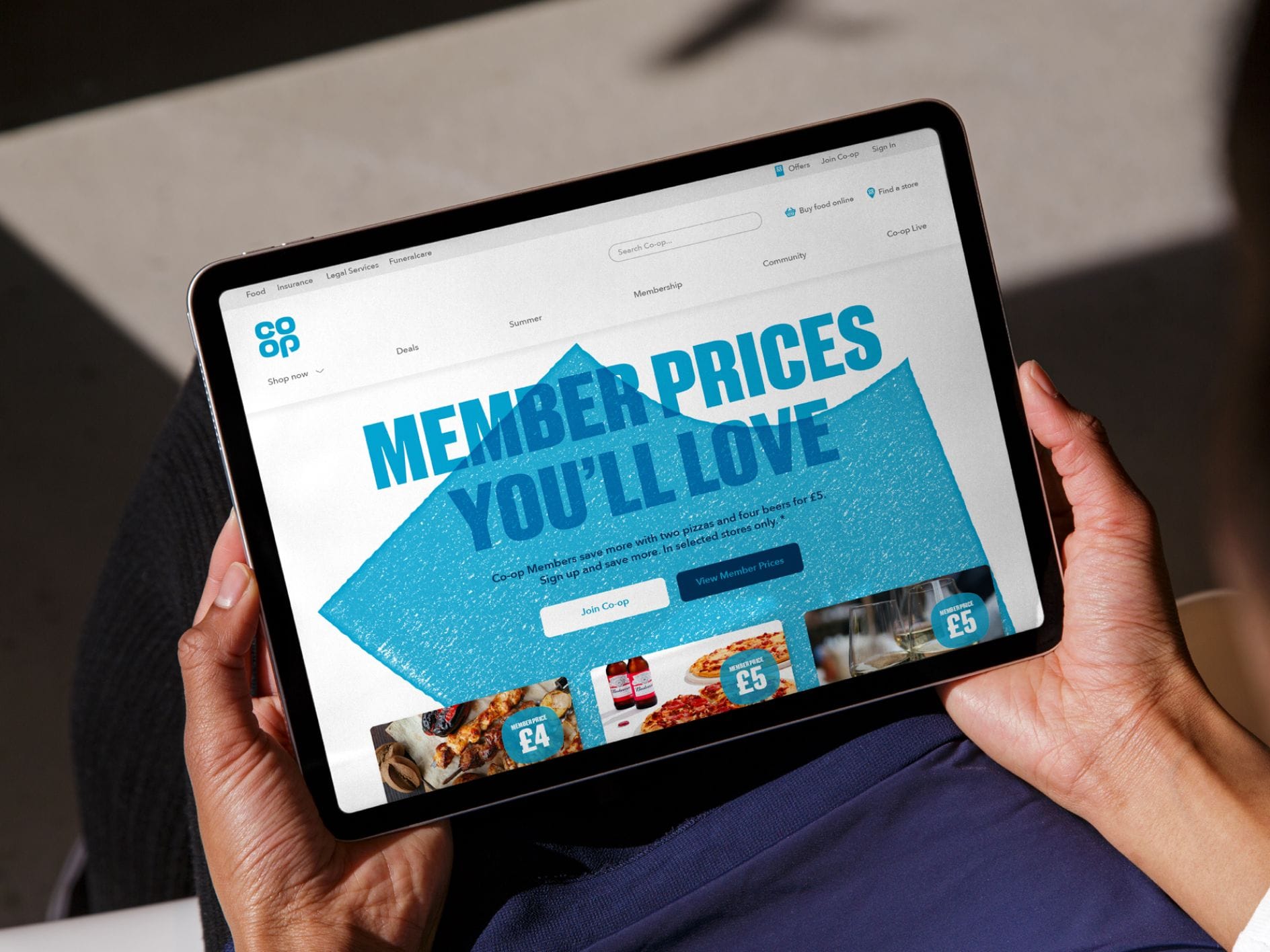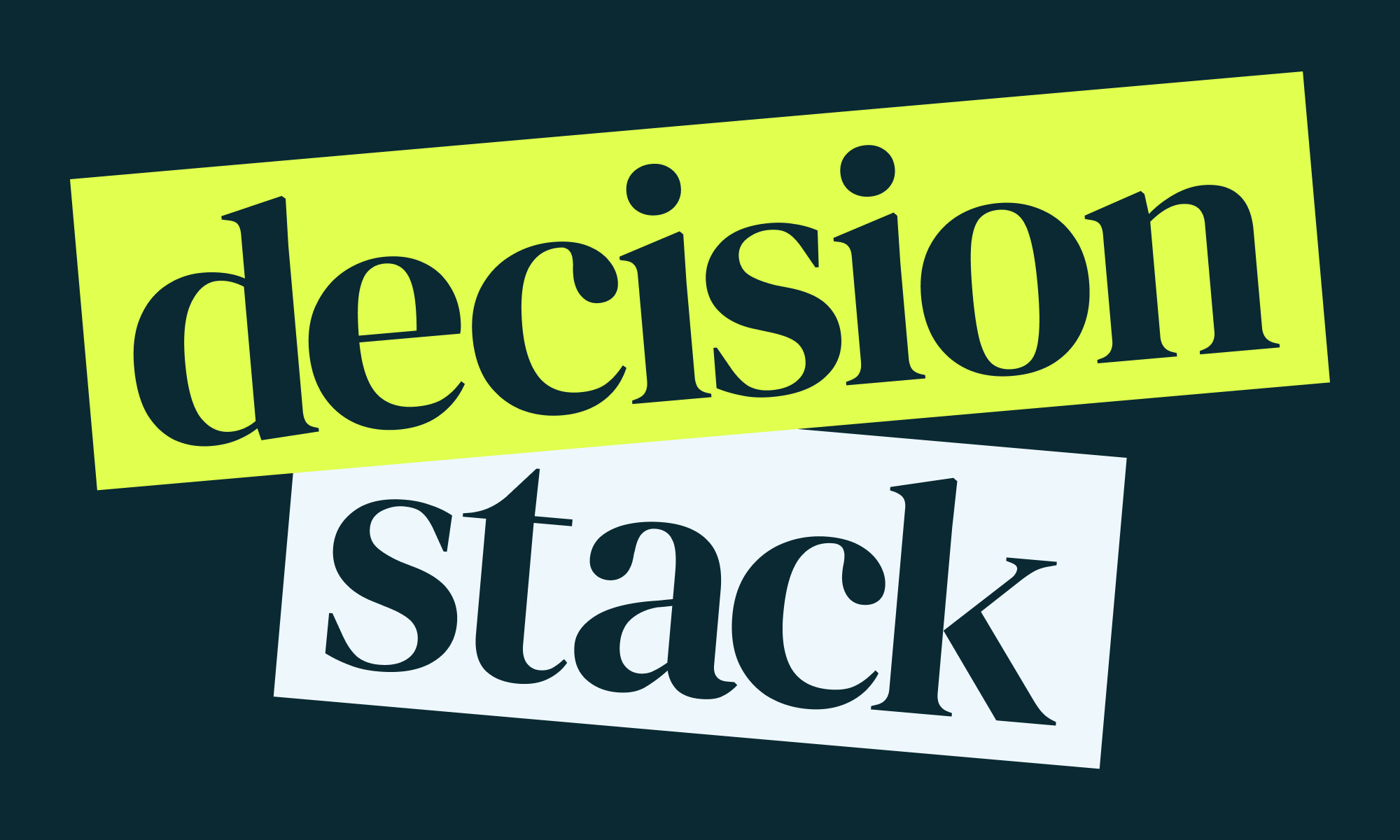How Co-op uses the Decision Stack to make sure their teams' objectives align with their vision
How Co-op uses the Decision Stack to drive visibility & clarity across the organisation so that every team understands how their work aligns with each other as well as the overarching company vision.

[Originally published on Co-op Digital in 2021]
We’ve found that although colleagues are aware of – and have often contributed towards – their immediate team’s objectives and understand how they feed into the overarching Co-op vision, there’s often less visibility around how a wider team’s work aligns with it.
So for example, the Co-op Membership team is made up of people with expertise in Operations, Marketing, Insight and Finance, as well as us here in Digital. It’s a huge team. Each of these areas of expertise has its own set of objectives but up until recently there hasn’t been much visibility between areas of expertise. We’ve always believed it is better to be joined up than to work in silos and universal remote working has forced us to make a conscious effort to do this better.
How might we align better?
At the beginning of last summer, the product community of practice invited Martin Eriksson to speak to us. He introduced us to the Decision Stack – a framework intended to “connect the dots from vision and mission, through strategy, objectives, and principles to every single daily decision.” From top to bottom it asks how we are going to do something, and from bottom to top it asks why we are doing it.
It sounded like the Decision Stack would go some way to solving our visibility problems on the Membership team so I spoke to people from all areas of expertise to find out what their objectives are.
When I had a list of objectives plus metrics on how we’ll know each has been met, I looked at how we could present them alongside several other connected elements such as strategy and principles. Even though few people are involved across all elements at the same time, it felt important for everyone to be able to see both the big picture, the details and the links between them all in one place.
So, in Figma (later Miro for ease of visibility), from top to bottom we stated:
- Co-op vision – “Co-operating for a fairer world”
- Co-op visionary principles
- Co-op Membership vision – “A membership that makes a difference for me, the communities I care about and a fairer world”
- Co-op Membership strategy – “A frictionless experience that motivates Members to participate by showing the impact that trading with Co-op has on their community”
- Co-op Membership ‘North Star’ metric (this is the number we care about above all other metrics)
- Co-op Membership objectives (including all areas of expertise within the Membership team)
- Objective metric (how we know we’ve been successful)

We now call this our ‘Vision and strategy framework’.
Our hope is that by making the flow of priorities from the top of the organisation transparent, we can empower teams to deliver work that meaningfully contributes to our organisational vision. We hope it will help us make sure that we’re all working towards common goals.
Showing the thing
When we showed what we’d done to the people with digital expertise in the Membership team, the feedback was that this was a useful way of thinking about how vision and principles and objectives are connected – in other words, the organisation’s goal and targets set within individual teams. So we shared it more widely: first to the rest of the Membership team and from there it’s been picked up by senior management and other teams have used the framework to align their work too.
The general consensus has been that this framework has made it easier for us to:
- zoom in and focus on the immediate priorities
- zoom out and put work in context
- have a single accessible source of truth
- share progress and update figures
How we’ll use it in the future
The framework should evolve to reflect what we have learnt, and any shifts in direction the business area or team might take. To make sure we have rigour around each framework, we are looking at how we can visualise these strategies alongside each other and how they are joined up by broader objectives on an organisational level.
To update the framework, someone has to add information and data manually. It has been a challenge to manage this and creates a bottleneck if someone is uncomfortable using Figma or Miro. In the next iteration, we will look at how we can automate live metrics and targets.
Like everything we do at the Co-op, the user should be central to these frameworks too. We are looking at how we can bring user experience outcomes alongside our business objectives to ensure we are accountable to the people who are ultimately affected by these strategies.
We’re really interested in hearing how teams of all sizes stay aligned. What do you come back to time and time again to keep you on track?

